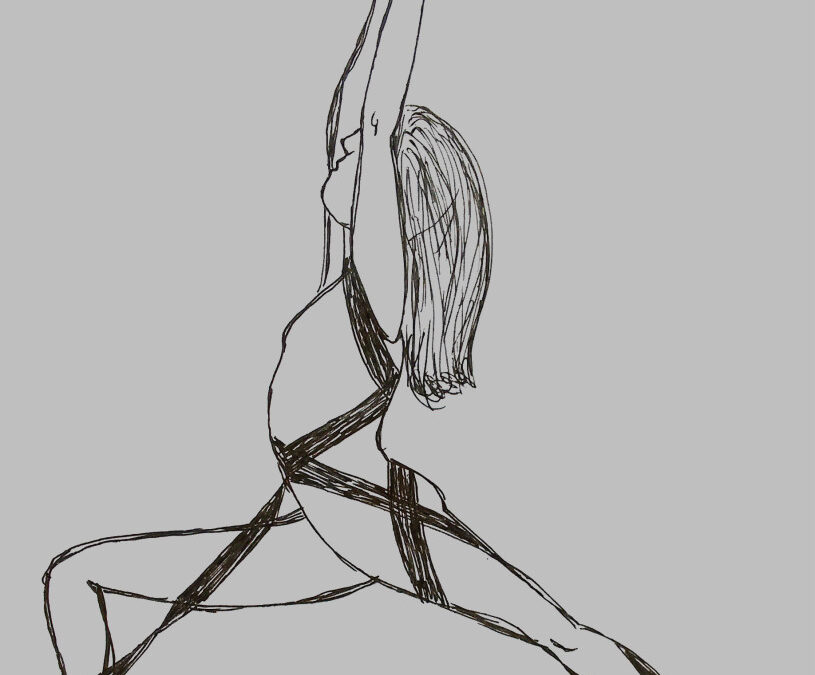
by Dr. Talia Marcheggiani, ND | Mar 31, 2015 | Alignment, Balance, Beauty, Chronic pain, Exercise, Fitness, Health, Mind Body Medicine, Physical Medicine, Yoga
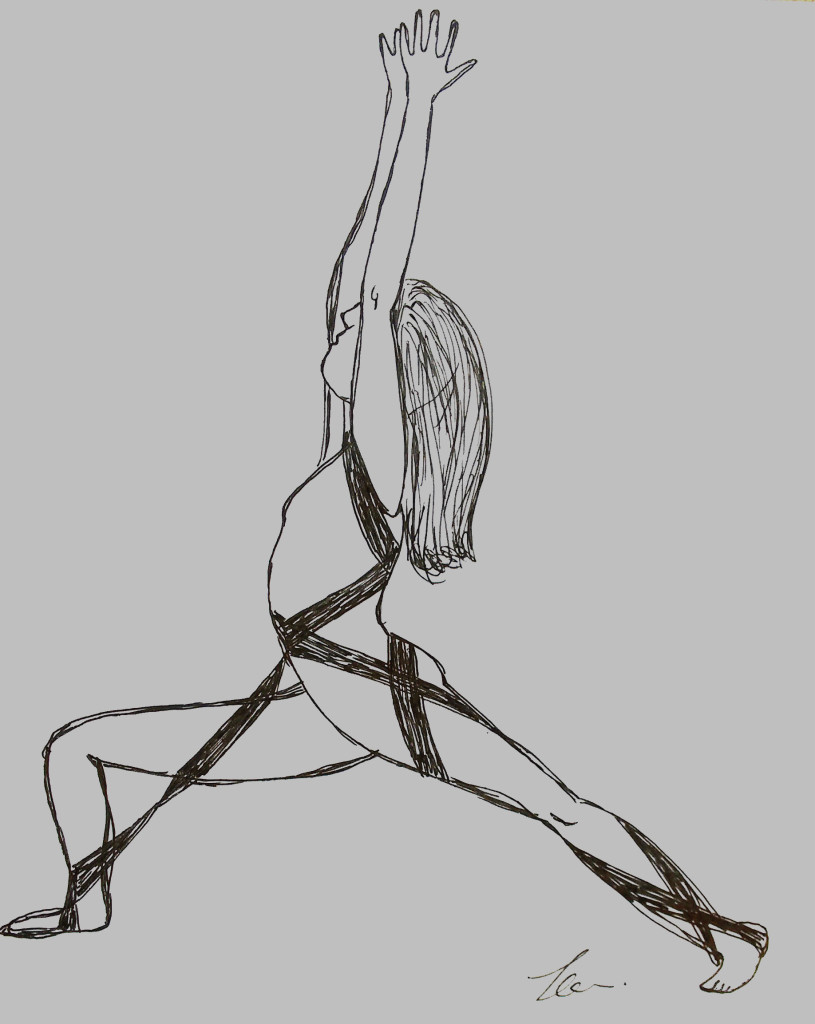 When you go through an upsetting breakup with your boyfriend, the thing to do, apparently, is attend an Ecstatic Dancing workshop. The friend who invited me didn’t say much about it, except that it was, “a place to dance without being hit on.” Apparently the practice would cleanse my aura and allow me to vibrate with the rhythms of the universe. So, I thought, why the heck not.
When you go through an upsetting breakup with your boyfriend, the thing to do, apparently, is attend an Ecstatic Dancing workshop. The friend who invited me didn’t say much about it, except that it was, “a place to dance without being hit on.” Apparently the practice would cleanse my aura and allow me to vibrate with the rhythms of the universe. So, I thought, why the heck not.
The Facebook invite hilariously clarified the tone of the event with their tag: “No alcohol, no drugs, no talking. We dance barefoot.” I took a sip of my wine and clicked “Going”. I was sold.
I showed up wearing yoga clothes and a tunic I got from India so I would fit in. My friends and I were greeted by girls wearing headbands whose faces were frozen in an expression of ethereal ecstasy, as if they’d just heard white angels whisper in their ears. They cleansed our chakras with a sage smudging and offered us “elixirs” of green tea kombucha. I was in over my hippie head—it was exactly the kind of weird I needed.
We entered a church gym full of people wearing flowing clothing who were gaily unleashing their spirits to music. I became acutely aware of not knowing what to do with my hands. A girl there with wild, frizzy hair and a long sheer robe was twisting and turning like a branch in the wind. It was like she had no bones. She looked like a goddess. I remember thinking that, if I could dance like her, I would consider myself well on my way to spiritual integration.
Instead, my body seemed to be at the mercy of 29 years of awkward repression and self-resistance, most of which I carried in the form of muscle tension. However, I tried to overcome the trauma of grade 6 dances and let myself succumb to the barefoot madness. I let my body pulse to the music as best I could. I felt free.
There were a group of girls who obviously frequented these kinds of events, wearing what looked like thick elastic bands that wrapped around their torsos and legs. One of the girls in the group was built like a princess warrior. Her body was pure sinew and bones. She was doing something that looked like graceful backward cartwheels, her face a picture of calm focus. I wanted to be like her when my spirit grew up.
When the no talking rule was lifted, I approached her to find out her secret. I imagined it had something to do with the elastic bands she was wearing. Maybe they bore the secret of why she was so present in her physical body. (I’m sure it had nothing to do with the years of yoga practice she’d committed to). “It’s called the Body Braid,” She told me, when I asked what she was wearing. “It helps you maintain proper alignment. I wear it for an hour everyday and since getting it, it’s helped transform my body.”
While I wasn’t sure what her pre-braided body must have looked like, I wanted a piece of this alignment and freedom for myself. I wanted my body to transform! She looked like she was wrapped in a cushy elastic hug. Her shoulders were back and not curving inwards like mine tend to. I instinctively raised a hand to my left shoulder to massage out a constant knot I’d lugged around since my first week of medical school.
Alignment matters. Having a toned, healthy body requires our bones and muscles to be in the right place. If they’re not, which happens due to improper posture, repetitive movements, incorrect footwear and, of course, excessive sitting, we experience tightness, pain and an overall poor-looking physique. You’ve seen it before: slouched shoulders, a bend at the hips, neck craning forward—not very sexy. Alignment helps with lymphatic drainage and proper circulation. It helps with muscle toning. This braided yogi I was talking to was perfectly aligned. She looked like she was ready to pick up a spear and tear after a zebra through the savannah. I imagined her climbing trees, dancing freely under the stars and doing backflips on a whim. Standing next to her I felt doughy and slouchy in comparison. I didn’t like the feeling.
I wanted the Body Braid.
I found it on the internet for under $100. It was made in Canada and developed by a medical doctor. I immediately ordered one and a few weeks later it arrived. I figured it was cheaper than a series of massages.
The body braid is made of two intersecting elastic bands in black or white that are about 5 cm wide. The straps can be adjusted and are sized according to your height. An instructional video on their website shows you how to wrap the braid around your body with 4 wraps on each side, one under each arm, one around the hips, behind the knee and around the shin. The end of each wrap is secured under the feet like a stirrup.
Once I was finished wrapping myself in, I felt my shoulder press back, my thighs straighten and the arches of my feet lift.
I liked the buoyant, uplifting feeling. It was teaching my body how to be—I was hooked.
I had a date that night and seriously considered either cancelling or wearing the thing out to the bar. Both those options seemed far superior to separating myself from this magical feeling of elasticity and buoyancy. (I eventually did remove it to go on the date, but probably shouldn’t have bothered. Next time I know: always prioritize posture.)
Since buying it, I’ve worn it for yoga classes, exercise, going out for walks and sitting at the computer.
My postural goals are to align my shoulders and take some strain off of my lower back. I want to feel integrated and connected to my body. In the cerebral world we live in, our bodies are often simply viewed as tools to carry our skulls around. The Body Braid is helping to connect all the parts of me: physical, mental and emotional.
For more information: bodybraid.com
*Body Braid did not endorse me to write this blog. However, I really wish they had.
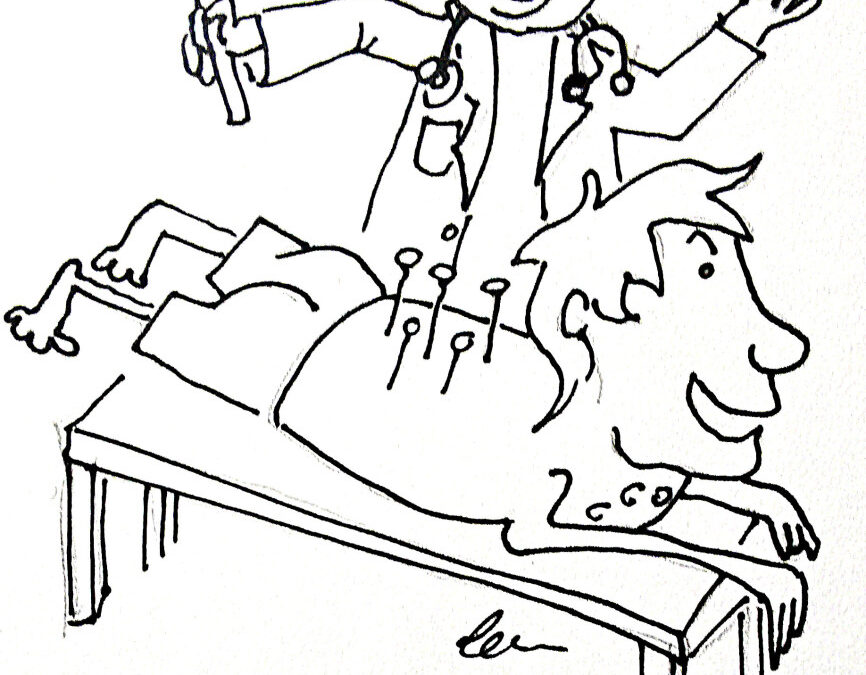
by Dr. Talia Marcheggiani, ND | Mar 24, 2015 | Balance, Diet, Digestion, Docere, Education, Fitness, Food, Health, Naturopathic Philosophy, Naturopathic Principles, Nutrition, Preventive Medicine
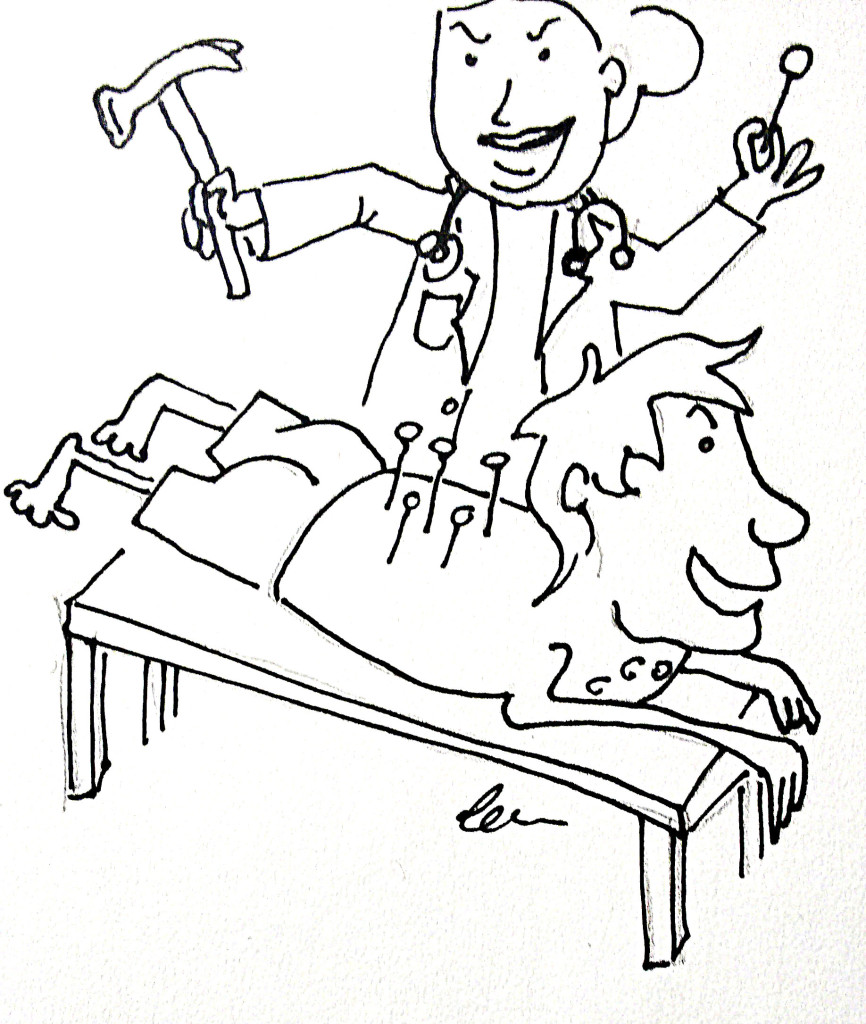 Many health complaints are common, but not normal.
Many health complaints are common, but not normal.
“I take migraine medicine everyday,” boasted L. She then went on to describe her plenitful medicine cabinet that, at the age of 23, she’d stocked quite well. “I get headaches when the weather’s bad, when I forget my glasses, when I’m hungry-” she went on. I repressed my immediate impulse to give her a list of supplements she could take and dietary changes she could make to never have another headache again, and simply said, “Well, L, you know I have a practice in the West end. If you want any more support…You can call—”
“—No, I’m good”, she responded, hurriedly. “I just need to find out how to get more of my medication.” The medication she referred to was high dose acetominophen, or Tylenol. She was taking 1 g pills and her doctor had told her that she could dose up to 4 g per day. Since 4 g will cause immediate liver failure, I was happy to learn she hadn’t needed to get that high… yet. What’s more, she wasn’t treating the cause of her condition. She was just addressing the symptoms, and consequently negatively affecting her health.
To use the car dashboard analogy, when your fuel light comes on and makes a noise while you’re driving on the highway, what do you do? Most people, without giving it another thought, will pull over to address the root cause of the chaos by adding more gas to the car. Very few of us will take out a hammer and smash the dashboard in. In fact, most of us cringe at how ridiculous the thought is. Imagine the entire naturopathic community cringing when they hear about someone swallowing several grams of Tylenol to smash out their migraine.
Pulling the car over to refuel and smashing the dashboard both serve to stop the annoying blinking and beeping of the fuel light. One of them is addressing the root cause and actually paying attention to what your car needs. The other is, well… I’ll let you come up with an appropriate adjective.
So this begs the question: why do we insist on smashing our symptoms away? The fuel light may be annoying, but drivers value its presence as a tool to let us know that we need to refuel lest we end up stranded on the highway without gas. The blinking light lets us know what is going on inside our car.
Why don’t we view our body’s symptoms in the same way?
I have patients who think that their depression is a part of them, or that the painful distention under their belly buttons after eating is “normal”. Sometimes we identify with our physical ailments to the point where they define us, as if it’s our lot in life to have acne or poor digestion or to be overweight—it’s not.
Dandruff, painful menses, seasonal allergies, aches and pains are not “normal.” Sure, they’re common. No, they don’t necessarily mean you have some life-threatening disease, and therefore your family doctor probably doesn’t have a reasonable solution for them, besides smashing at them with the hammers in their toolbox from time-to-time.
When I saw my first ND, I was excited at the idea that, even though my doctor assured me that the random, annoying symptoms I was suffering from were “normal”, they were in fact not normal and something could be done about them. From the ND’s standpoint, the symptoms were an indication of budding imbalances and treating them was preventing more serious conditions down the line. Feeling cold all the time and excessively full after meals weren’t just annoying symptoms, they were important messages from my body that things weren’t all right and that something needed to be done.
Is there an annoying symptom you’ve been experiencing that you’ve come to accept as something you just have to live with?
Contact me to find out what we can do about it!
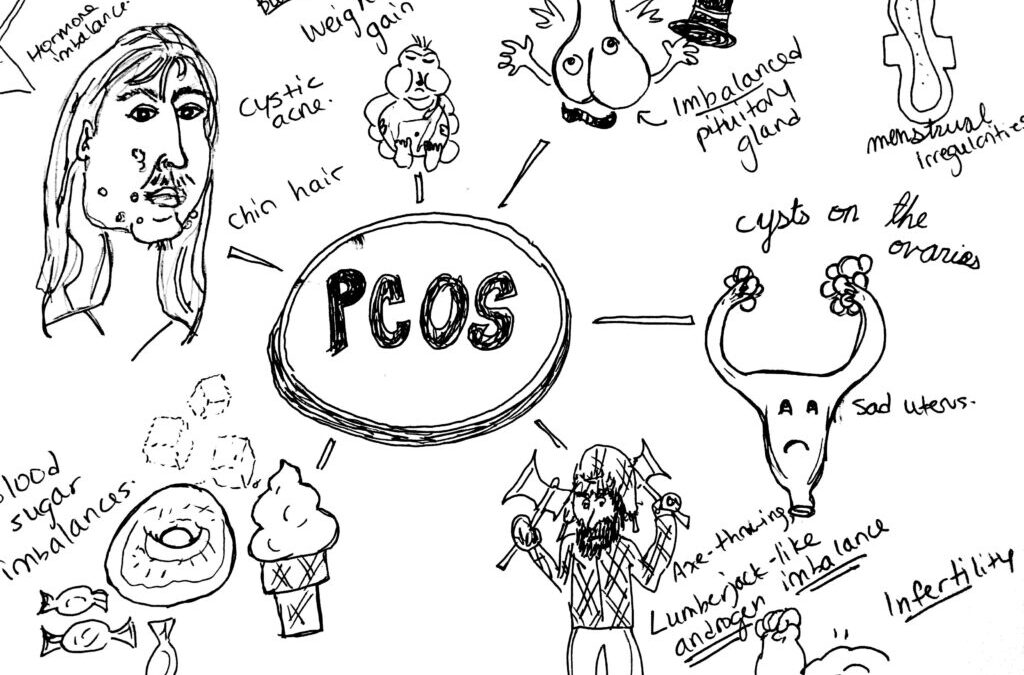
by Dr. Talia Marcheggiani, ND | Mar 19, 2015 | Creativity, Diet, Endocrinology, Exercise, Fertility, Health, Lifestyle, Medicine, Mind Body Medicine, Nutrition, Paleo, Sex, Sexual Health, Skin health, Weight Loss, Women's health
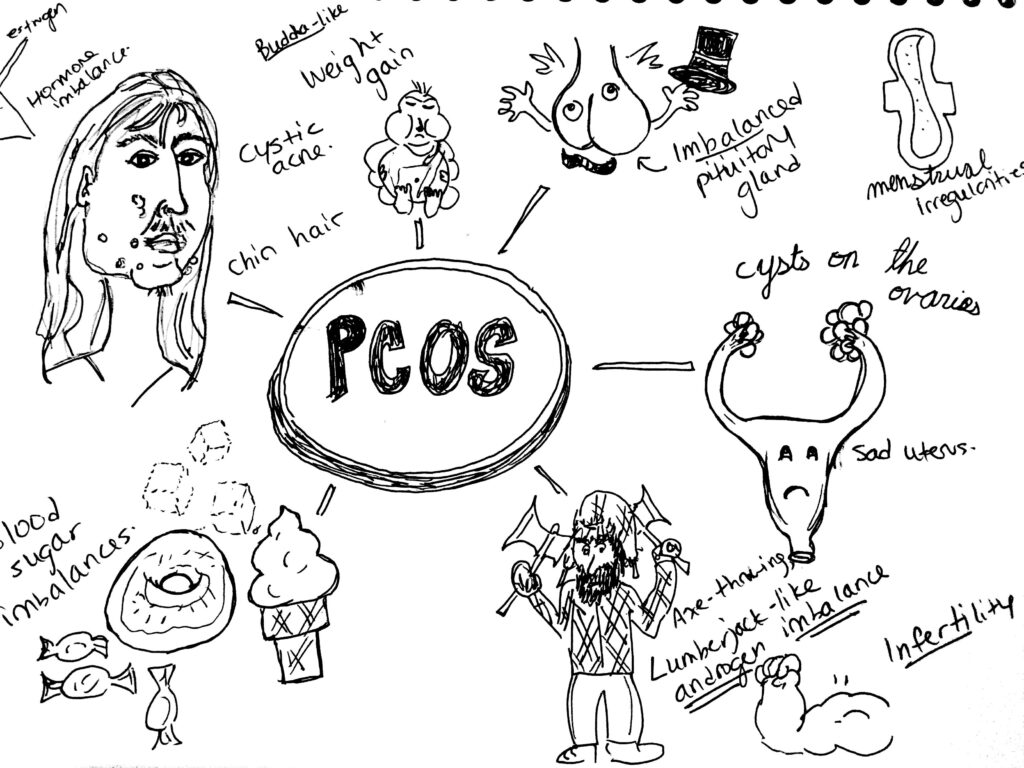 PCOS, or Polycystic Ovarian Syndrome, a condition which affects an estimated 10% of women in North America and is the most common endocrinological dysfunction in women.
PCOS, or Polycystic Ovarian Syndrome, a condition which affects an estimated 10% of women in North America and is the most common endocrinological dysfunction in women.
Its symptoms and the people it affects are as diverse as there are people affected; it’s one of my favourite conditions to treat.
Signs and Symptoms:
PCOS is characterized by hormone dis-regulation. Oftentimes it presents with cysts on the ovaries, but not always. In PCOS there is often elevated blood glucose and other markers of insulin resistance. There are often issues with menstruation: the absence of periods (amenorrhea), or heavy and irregular bleeding (dysmenorrhea). Weight gain is common—although some women with PCOS can be thin—as is hormonal acne and hirsutism, a nice word for male-pattern hair growth: excess hair growth around the chin and upper lip, the chest or navel region. Pelvic pain around ovulation may occur when cysts rupture. Infertility is common in women with this condition.
PCOS is a syndrome, rather than a disease, which means it presents as a collection of symptoms that can be varied in their presentation and severity. Lab work may read that estrogen, testosterone and LH (a hormone produced by the pituitary gland and ovaries) are high and progesterone and FSH (a hormone released by the pituitary gland) are relatively low. However, what brings a woman with PCOS or PCOS-like symptoms into my office is varied and usually consists of any combination of visible symptoms: hair growth, weight gain, acne, menstrual irregularities or infertility.
Etiology:
We are uncertain how the collection of symptoms that is PCOS arises. One prominent theory is that issues with blood sugar and insulin regulation create ovarian cysts or disruptions in the secretion of sex hormones. This causes the ovaries to release more LH, which has the power to raise testosterone. High insulin, testosterone and estrogen can cause weight gain, hair-growth, acne, absence of ovulation (anovulation) and the inability to maintain the uterine lining and therefore carry a pregnancy to term.
Diagnosis:
PCOS is diagnosed by symptoms. It involves a combination of symptoms: amenorrhea (or absence of menstrual periods), infertility, hair growth on the face, acne and insulin resistance. The presence of ovarian cysts, as detected on an ultrasound were once diagnostic, but many patients present with symptoms and are cyst-free. An increase in LH and testosterone, with lab values indicating insulin resistance and metabolic syndrome, can also lead doctors to suspect PCOS, when appearing in conjunction with other symptoms.
Because it is a syndrome, patients often come into my practice with a variety of complaints. Some come in to deal with their skin health, others want help with fertility or menstrual cycle regulation and many others come in with weight loss goals.
Conventional Treatment:
Treatment in conventional medicine is simple: oral contraceptives. If your testosterone is high and estrogen and progesterone are out of whack, the conventional medical system tells us to simply override natural hormone production, or lack thereof, with synthetic versions of the same thing. For my professional opinion on regulating hormones with oral contraception, see my post on the birth control pill (which I no longer take). These birth control pills often contain chemicals that prevent the secretion of male hormones. This helps clear up acne and hair growth.
Medication for type II diabetes, Metformin, is used to help regulate insulin. Patients experience weight loss on Metformin, as it helps control insulin resistance, however it also depletes vitamin B12, which means that regular injections of B12 are necessary to avoid deficiency symptoms. Further, Metformin doesn’t address the root cause of insulin resistance, which is most likely lifestyle and hormonal imbalance. This means that patients will be medicated (and therefore receiving B12 injections) for life.
I do not mean to negate the fact that oral contraception and Metformin have helped countless women. I respectfully acknowledge the fact that the lens I look through is one of a different, more natural and whole-bodied approach to medicine that aims to treat the individual by addressing the root cause of disease.
In short: I prefer to try it the naturopathic way first.
Naturopathic Treatment:
Lifestyle. Naturopathic remedies are very effective, but often quite involved. They begin with lifestyle modifications—a low glycemic index diet like the Mediterranean or the Paleo diets, that emphasize whole foods, like fruits, vegetables, healthy fats and lean protein and eliminate sugar, white flours and white carbohydrates. Exercise is important in treating PCOS. One of my professors advocates intense cardio, such as high-intensity interval training, or weight-lifting 5-6 days a week. This must be done for several months before effects are seen and blood sugar and other hormones are regulated.
Supplementation and botanicals. Myo-inositol, a B vitamin, is a first-line treatment for PCOS in the natural health world. The amount of research steadily growing behind its use should probably make this gentle and effective treatment first-line for treating PCOS in all healthcare fields. Studies show that, when dosed properly, inositol can regulate blood sugar, assist with weight loss and regulate menses, even promote fertility.
Herbs like Vitex agnus-castus, or chaste tree, can help regulate the balance between estrogen and progesterone. Spearmint and Serenoa repens, or saw palmetto, can help decrease male hormones in the body. Gymnema and berberine are other therapies useful for regulating blood sugar and helping with weight loss.
Ensure that you are receiving counsel from a licensed naturopathic doctor before supplementing. The dose and quality of supplements and herbs is essential to feeling better—don’t hack it in the health food store alone!
Acupuncture. Acupuncture has been shown to be effective for promoting fertility. I have had some good success in promoting pregnancy and fertility with acupuncture in my practice. Fertility clinics in Canada now use acupuncture before and after IVF treatments to ensure treatment success. It also helps to relieve stress and lower cortisol, which helps with insulin-lowering and blood sugar management.
In Traditional Chinese Medicine, PCOS can manifest as dampness, Qi or yang deficiency or issues with the Spleen or Kidneys. Acupuncture can help tonify and balance these patterns.
Homeopathy. I have had success using homeopathy in conjunction with lifestyle and supplementation in treating PCOS. Homeopathy acts deeply on the energetic level of disease, working on the level of emotions and sensations and working to address the energetic cause of disease. It involves a thorough interview and an individualized prescription from a licensed naturopathic doctor or homeopath.
Mind-Body Medicine. The ovaries are located at the level of the second chakra, which is an energetic centre in the body associated with sexuality and creativity. Christine Northrup, MD, asserts that the presence of ovarian cysts represents an energetic blockage in our creative power and unmet emotional needs. Louise Hay, author of “You Can Heal Your Life” tells us that ovarian cysts represent some sort of past hurt that we can’t let go of. Crying, journalling and identifying repressed emotions can help to remove these energetic blockages. In many women with PCOS, there is an imbalance in the identification with their femininity, or what it means to be a woman.
Sometimes our bodies alert us of imbalances in our emotional lives through the presence of physical symptoms. As a naturopathic doctor, it is essential I address all levels of the person—mentally, emotionally and spiritually, not simply physically.
PCOS is a diverse and challenging condition to treat that can cause a lot of hardship for the women who suffer from it. However, a diagnosis of PCOS can be an opportunity for growth and transformative healing through naturopathic medicine. For this reason, I find it can be one of the most interesting and rewarding conditions to treat. Contact me to find out more.

by Dr. Talia Marcheggiani, ND | Mar 2, 2015 | Clinic, Community, Creativity, Finding yourself, Gratitude, Health, Patients, Private Practice
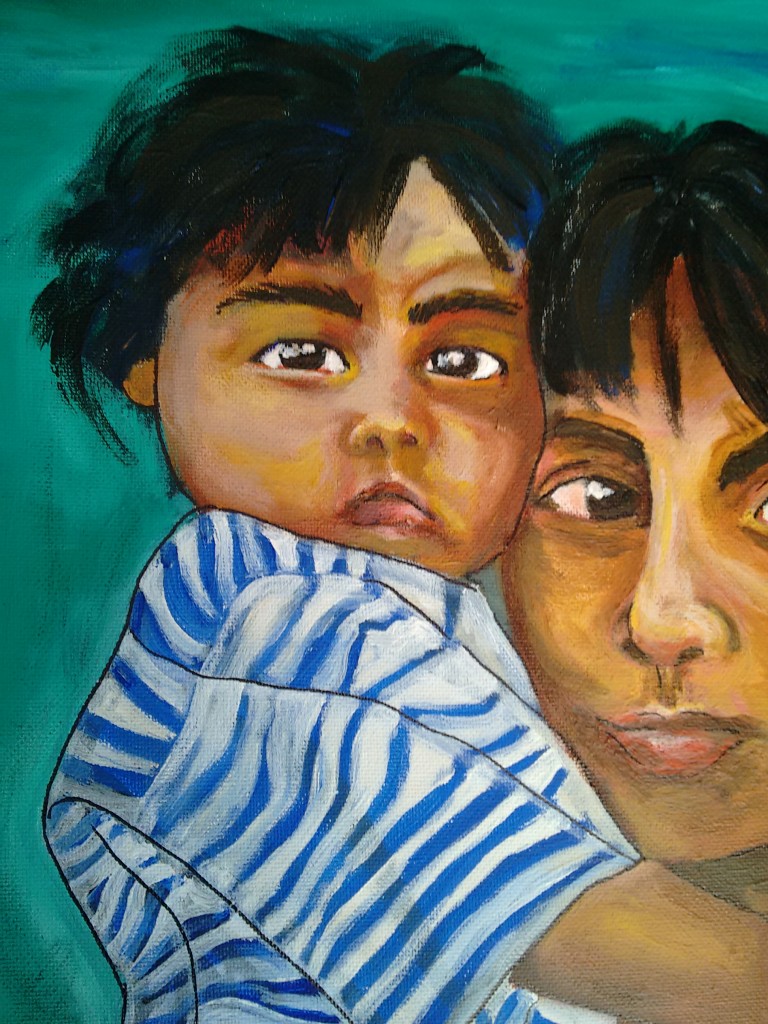 I wrote this post a few months ago while beginning my private practice. When I first wrote this post, the next week an incredibly good-fit-of-a-patient walked in my door! A month later, another booked in! I have been blessed from the start with a roster of wonderful people who have found their way into my practice. I’m posting this blog post to celebrate that and keep morale high.
I wrote this post a few months ago while beginning my private practice. When I first wrote this post, the next week an incredibly good-fit-of-a-patient walked in my door! A month later, another booked in! I have been blessed from the start with a roster of wonderful people who have found their way into my practice. I’m posting this blog post to celebrate that and keep morale high.
No, I don’t have her yet (edit: there are a few potentials, though!). Instead, I began practice with a few individuals who reflected back my insecurities, made payment awkward (likely more about me than about them) or who threaten to complain about me to the regulatory board (long story) and keep forgetting to follow their treatment plans.
Naturopathic doctors have the second largest scope of practice in Ontario besides medical doctors. We are primary care providers. We are highly trained. If I wanted to get filthy rich I’d have done something else, anything else. I am 29 and I wear sweaters from the Salvation Army and live with my parents—I just want to help people.
I digress. My perfect patient does not yet exist, but in a marketing workshop I took in November, they told us to imagine our ideal patient—where does he or she live, work, drink his or her coffee? I decided to create a blog out of it, killing a few birds (free range turkeys) with a single (humane) stone. That being said, if you read to the bottom of this post and find out that you are, in fact, the perfect patient, or know one that is, then please message me and I will get back to you as soon as I can.
The Perfect Patient
The perfect patient has extended health benefits. However, she understands that health is worth paying for and is willing to go beyond her benefits in order to feel better.
She has faith in naturopathic medicine and in my doctoring skills. She understands the work and education it took to get to where I am. She respects that and recognizes that my opinion is far more informed than that of a health show host, blog poster or supplement store employee.
The perfect patient knows me. She’s heard of me, or read my professional blog, or been to a talk. She jives with my spirit as a doctor and therefore is already sold on me and naturopathic medicine before she comes into the office.
She is compliant. She understands what education and training is behind the treatment recommendations that are prescribed to her. She follows them, determined to make positive changes to her health. And, because she does this, she gets better. She takes an active role in her own health and doesn’t hesitate to help me understand what treatments are feasible and appropriate for her.
She tells all her friends and family about me and how I’ve helped her. She refers them all to me. Like 10-20 people are direct referrals from her.
These referrals begin to refer as well. It’s a great practice because they all connect with my philosophy and follow my recommendations and are willing to pay for my services and don’t cancel their appointments without giving 24 hours’ notice.
They are all respectful of my time. They don’t overstay their visits or bombard me with emails, unless they are genuinely confused about something or they have a legitimate concern and they understand that, if it requires more than 15 minutes of my time then we need to book a follow-up in person or a phone consultation and they know that requires payment. After all, I am a professional.
They all follow my blog and recommend it to friends. One of their friends is a big-deal editor and signs me on for a book deal. I sell a lot of books and this generates even more patients who are in line with my beliefs and the medicine I practice.
Everything flows, naturally and easily. I learn a lot. These patients are introspective and interested in growing. They know that health is the foundation of a good life. They want to make the most out of life, to challenge themselves in interesting ways and embrace love and creativity and spirituality. We have great conversations that allow us to benefit and look at life a little differently. My clinic becomes a place of healing and spiritual growth.
“I feel better just by spending time in the waiting room.” Say the new patients these days.
I start a Alternative Healing Collective with my current clinic owner, an MD/Homeopath. We employ different healthcare providers and pay them salaries. The patients pay a yearly rate and then are charged a smaller fee for a visit. Practitioners and patients form boards and vote on changes and practices of the clinic. It becomes a place of progressive private healthcare.
Students come from around the world to learn from our methods and copy our model of providing accessible, effective healthcare.
We dedicate our time to helping those who can’t pay for the services but are in line with our principles and would benefit from our care. We travel to countries and set up clinics there. We give talks, workshops and classes. We do community acupuncture.
Our clinic becomes a community centre for healing, where patients can drop by, have a tea, listen to a talk or take a class, see a practitioner, meditate, take out books on health or just sit and converse with like-minded individuals. We are closely connected with the arts, especially the visual arts and have non-toxic art studios for health-conscious people who believe in expression and beauty.
Our clinic becomes a model throughout Canada, then throughout the world. We revolutionize the healing professions.
When I retire I become a mentor, an elder. I still see patients and teach classes and write books. Sometimes I write fiction. Sometimes I paint. I feel like a part of the community. I feel I have given back, traveled and grown and lived and loved.
Then I die peacefully, surrounded by family, friends and community and love.
And it all started with the Perfect Patient.
Here’s hoping.

 When you go through an upsetting breakup with your boyfriend, the thing to do, apparently, is attend an Ecstatic Dancing workshop. The friend who invited me didn’t say much about it, except that it was, “a place to dance without being hit on.” Apparently the practice would cleanse my aura and allow me to vibrate with the rhythms of the universe. So, I thought, why the heck not.
When you go through an upsetting breakup with your boyfriend, the thing to do, apparently, is attend an Ecstatic Dancing workshop. The friend who invited me didn’t say much about it, except that it was, “a place to dance without being hit on.” Apparently the practice would cleanse my aura and allow me to vibrate with the rhythms of the universe. So, I thought, why the heck not.





